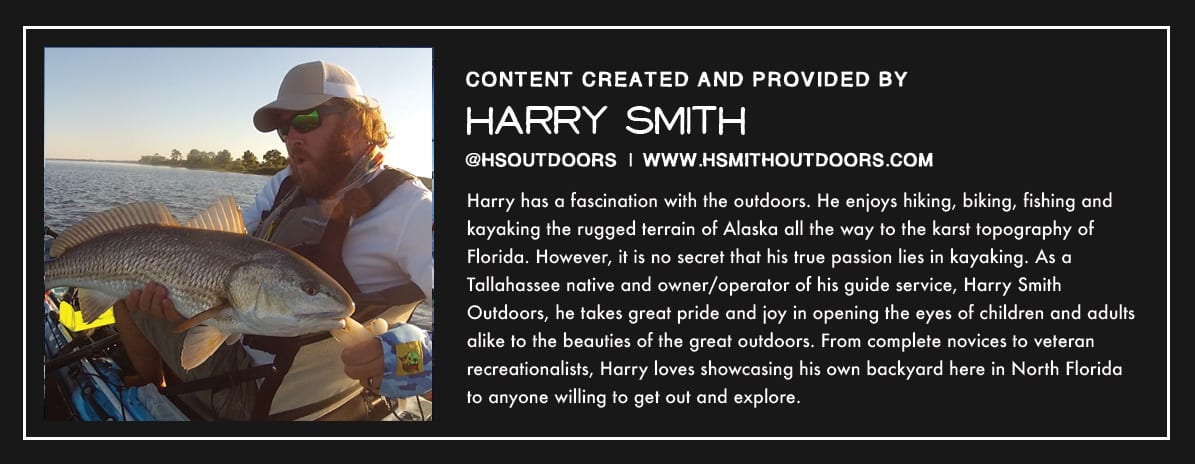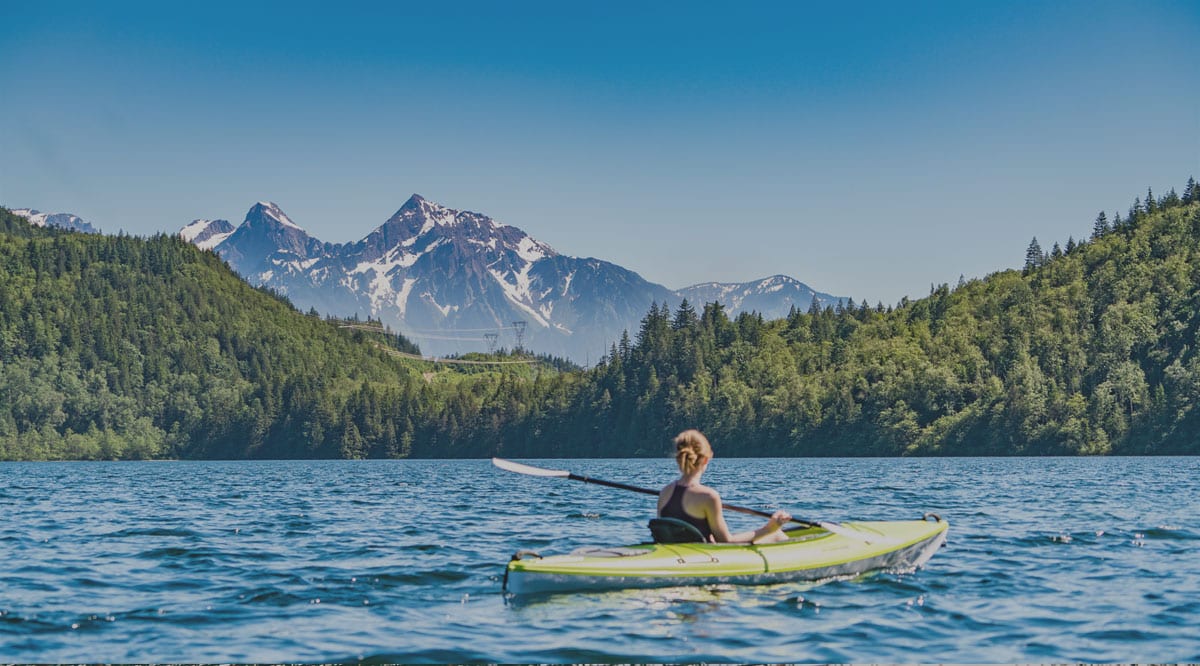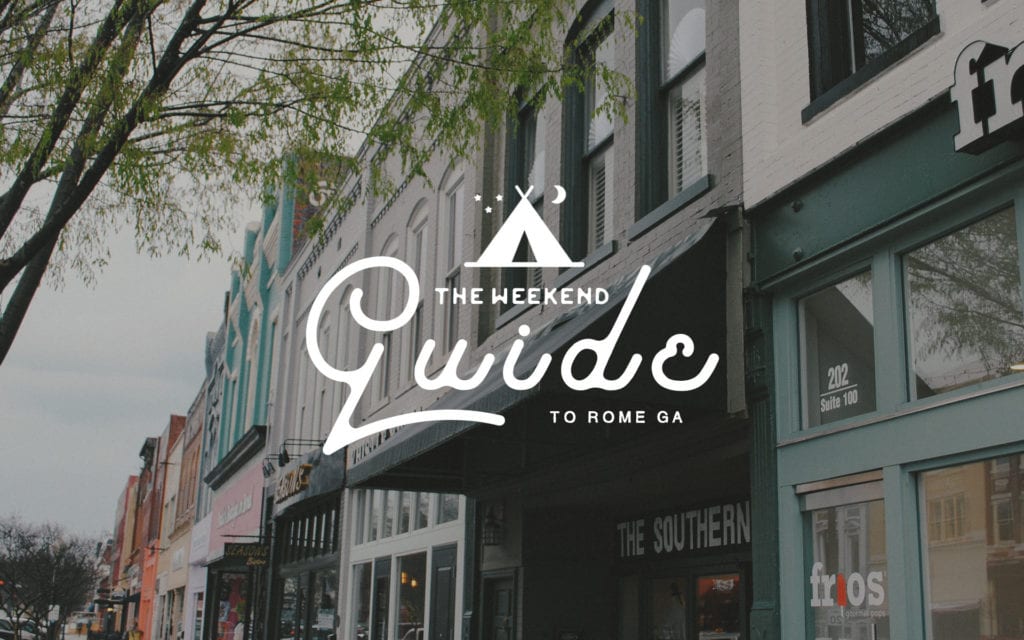 This post originally appeared on the Vibe Kayaks blog.
This post originally appeared on the Vibe Kayaks blog.
The days are slowly getting shorter, cooler and, for us in the south, more tolerable. It slowly is becoming an outdoor enthusiasts’ favorite time of year: camping season! Whether you’re an avid hiker, cyclist or paddler, we all look forward to spending more time in the great outdoors during autumn. And as of September 22nd, it is officially that time! If you’re anything like me, you’re beginning to unpack the camping gear to make sure that everything is in working order and ready to rock and roll. As a kayaker paddling into the cool season, there are several things that should be taken into consideration when planning that weekend-long adventure out on your favorite body of water, or better yet, that body of water you’ve been longing to explore over the course of several days. So let’s talk about some important tips to ensure that you have a safe and successful time while enjoying the art of kayak camping.
Don’t pack the kitchen sink.
When packing a kayak for an overnight excursion, I like to pull a few pages out of a backpacker’s book. What I mean by that is to pack minimally. Although we aren’t packing all of our gear on our back, we do have to paddle it, and in some cases, even portage our load. So I like to lay all the gear that I think I may need out onto the floor and categorize it into ‘like’ piles. Since I pack all my things into dry bags, I lay them out as well. Matter of fact, you’ll find it easier to pack using several smaller dry bags instead of just a couple of large ones. Once everything is laid out and categorized, go through and set aside things you don’t need. You’d be surprised what you can get away with not having. If you’re going with a group, get together and make a list of what each of you could bring. Everyone doesn’t need to pack a roll of toilet paper, you don’t need four stoves, you might be sharing a tent… you get the idea. Oh, and pre-pack your kayak; you’ll find out real quick what you can fit and what you cannot.
 Plan ahead.
Plan ahead.
Piggy-backing off of my first tip is to plan ahead. When packing your kayak, don’t store items that need to be readily accessible in an inaccessible location. Remember that toilet paper? Yeah, make sure it’s readily available. Your sleeping gear can be packed low and away since you’ll only need it in the evenings once you’re somewhere that you’ll stay for the night. So think ahead of how accessible you’ll want some items and it’ll save you a ton of headaches throughout your trip. And remember: pre-pack your kayak to help figure out where things are better suited.
Weight distribution.
This may very well be the single most important aspect when it comes to packing your kayak: evenly distributing your weight. This will make all the difference once you hit the water. A good rule of thumb is to pack all your heavy items toward the center of your kayak; this usually includes your food, cookware and stove. All of your lighter and/or bulky items can be left at the ends. Most importantly, be sure that everything is low and centered in order to keep the boat balanced. If you’re listing to one side or another it will make for a long and agonizing trip, so repack if you find this happening to you. Did I mention to pre-pack your kayak?
When it comes to safety, this is the single most important piece of information that I can give you. Always, ALWAYS, leave a float plan with someone, even when you’re just off on a day trip. A float plan should be left with someone that can reach out for help if need be. A proper float plan should consist of this information:
- A detailed description of your kayak
- Names/emergency contact/special medical conditions of all people in your party
- A detailed itinerary including:
- Departure location/time,
- Arrival location/time
- Any stopovers that you will have
Remember, the more information the better. I personally know how important having a float plan can be. On a routine day trip in the backcountry of Alaska, my friend and I took our boat out on a scouting mission. Unbeknownst to him, his gas gauge stopped working on his vessel. Twenty six miles from the landing we ran out of gas on Halloween; a cold and snowy Halloween. We luckily blew onto shore where we hiked and found a cabin to stay overnight in. Because I left a float plan with my wife, she knew where we were and when we were supposed to be back. When we didn’t return, she called the proper authorities who found us the next morning via plane. That seemingly innocent trip that we’d taken many times could have ended up much worse than it did if not for our float plan. So leave a float plan, always.
 Must-haves.
Must-haves.
Although everyone and every trip are different when it comes to “protocol” equipment and gear, there are some emergency must-haves that I would recommend to everyone. These items include:
- Knife
- Duct tape
- Compass/map
- Signaling device (both sound and visual)
- Multitool
- Waterproof matches/firestarter
- Rope or paracord
- Water filter
- First-aid kit
- Spare paddle
- These items can take you a long way if need be and should not be overlooked.
Obey the law.
Last, but certainly not least, is to be sure that you are enjoying your trip within the parameters of local laws and regulations. Do your homework on the area you plan to visit so that you’re aware of any restrictions that they may have. Requiring camping permits or allowing open campfires are just a couple things that may be regulated in the area. Do your research. And of course, be sure that fires are completely put out and that you’re not leaving any trash behind. Proper ‘leave no trace’ practices will ensure that the area is left in good condition for the next person.
So whether you’re a seasoned camper looking to add the spice of kayaking or a kayaker looking to add the thrill of camping, these tips will not only allow you to have peace of mind when headed out, but will also give peace of mind to your family and loved ones. Proper packing, leaving a float plan and having essential gear are all part of a successful and enjoyable trip while camping out on the water. So embrace the camping season, have fun and make memories!



